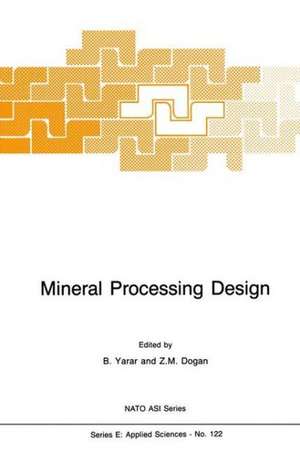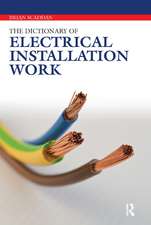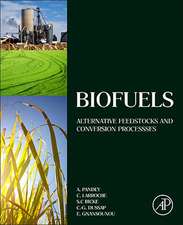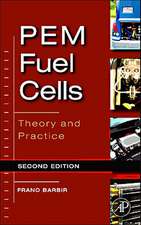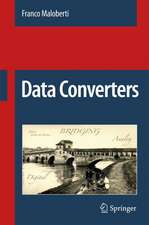Mineral Processing Design: NATO Science Series E:, cartea 122
Editat de B. Yarar, Z.M. Doganen Limba Engleză Paperback – 7 ian 2012
Din seria NATO Science Series E:
- 24%
 Preț: 1570.70 lei
Preț: 1570.70 lei -
 Preț: 397.76 lei
Preț: 397.76 lei -
 Preț: 386.81 lei
Preț: 386.81 lei - 20%
 Preț: 346.24 lei
Preț: 346.24 lei -
 Preț: 424.33 lei
Preț: 424.33 lei - 18%
 Preț: 1224.18 lei
Preț: 1224.18 lei - 18%
 Preț: 1836.63 lei
Preț: 1836.63 lei - 18%
 Preț: 1229.28 lei
Preț: 1229.28 lei -
 Preț: 381.00 lei
Preț: 381.00 lei -
 Preț: 409.30 lei
Preț: 409.30 lei - 18%
 Preț: 1841.36 lei
Preț: 1841.36 lei - 5%
 Preț: 367.28 lei
Preț: 367.28 lei -
 Preț: 407.19 lei
Preț: 407.19 lei - 18%
 Preț: 1838.38 lei
Preț: 1838.38 lei -
 Preț: 420.28 lei
Preț: 420.28 lei -
 Preț: 399.29 lei
Preț: 399.29 lei -
 Preț: 398.74 lei
Preț: 398.74 lei - 18%
 Preț: 3026.13 lei
Preț: 3026.13 lei -
 Preț: 388.90 lei
Preț: 388.90 lei - 5%
 Preț: 391.06 lei
Preț: 391.06 lei - 18%
 Preț: 1228.62 lei
Preț: 1228.62 lei - 18%
 Preț: 1229.73 lei
Preț: 1229.73 lei - 18%
 Preț: 1234.46 lei
Preț: 1234.46 lei - 5%
 Preț: 3532.05 lei
Preț: 3532.05 lei - 18%
 Preț: 1840.11 lei
Preț: 1840.11 lei - 5%
 Preț: 378.80 lei
Preț: 378.80 lei - 18%
 Preț: 1227.84 lei
Preț: 1227.84 lei -
 Preț: 395.63 lei
Preț: 395.63 lei - 18%
 Preț: 2489.30 lei
Preț: 2489.30 lei - 5%
 Preț: 1429.27 lei
Preț: 1429.27 lei -
 Preț: 396.02 lei
Preț: 396.02 lei - 5%
 Preț: 2142.61 lei
Preț: 2142.61 lei - 18%
 Preț: 3049.16 lei
Preț: 3049.16 lei - 18%
 Preț: 1844.54 lei
Preț: 1844.54 lei -
 Preț: 403.53 lei
Preț: 403.53 lei
Preț: 392.75 lei
Nou
Puncte Express: 589
Preț estimativ în valută:
75.18€ • 81.69$ • 63.19£
75.18€ • 81.69$ • 63.19£
Carte tipărită la comandă
Livrare economică 22 aprilie-06 mai
Preluare comenzi: 021 569.72.76
Specificații
ISBN-13: 9789401080873
ISBN-10: 9401080879
Pagini: 376
Ilustrații: IX, 362 p.
Dimensiuni: 160 x 240 x 20 mm
Greutate: 0.53 kg
Ediția:Softcover reprint of the original 1st ed. 1987
Editura: SPRINGER NETHERLANDS
Colecția Springer
Seria NATO Science Series E:
Locul publicării:Dordrecht, Netherlands
ISBN-10: 9401080879
Pagini: 376
Ilustrații: IX, 362 p.
Dimensiuni: 160 x 240 x 20 mm
Greutate: 0.53 kg
Ediția:Softcover reprint of the original 1st ed. 1987
Editura: SPRINGER NETHERLANDS
Colecția Springer
Seria NATO Science Series E:
Locul publicării:Dordrecht, Netherlands
Public țintă
ResearchCuprins
Foreword.- 1 — Applied Mineralogy in Ore Dressing.- 1. Introduction.- 2. Studies On Uncrushed Ores.- 3. Studies of Crushed Mill Products.- 4. Applied Mineralogy in Circuits Treating Volcanogenic Ores.- 5. Examples of Beneficiation Problems Explained by Mineralogical Studies.- 6. Equipment for Performing Mineralogical Analysis.- 7. Methods of Mineral Identification.- 8. Methods of Determining Mineral Compositions.- 9. Methods of Determing Mineral Quantities.- 10. Methods of Determining Mineral Liberation and Size Distributions.- 11. Presentation of Data.- References.- 2 — Chemistry osf Sulfide Mineral Flotation.- 1. Introduction.- 2. Modulation of Collector Coating.- 3. Electrochemical Studies.- 4. Silver Sulfide Electrode and Its use in Controlling Flotation of an Oxidized Lead-Zinc Ore.- References.- 3 — Coal Flotation.- 1. Introduction.- 2. Structure and Composition of Coal, Affecting Coal Flotation.- 3. Operational Factors Related to Coal.- 4. Cost of Coal Preparation Plant.- 5. Conclusion.- References.- 4 — Gravity Concentration Methods.- 1. Introduction.- 2. Principles.- 3. Mechanism of Concentration.- 4. Unit Processes.- 5. Testing for Gravity Concentration.- 6. Plant Operations.- References.- 5 — Processing of Mineral Ores by Modern Magnetic Separation Techniques.- 1. Introduction.- 2. Particle Entrapment Devices.- 3. The Kolm-Marston ‘High Gradient’ Magnetic Separation.- 4. Particle Deflection Devices.- 5. Prototype OGMS Systems.- 6. Projected Future Developments.- References.- 6 — The Methodology of Froth Flotation Testwork.- 1. Introduction.- 2. Objectives and Evaluation Criteria.- 3. Mineral Appraisal.- 4. Types of Flotation Testwork.- 5. Statistical Aspects of Flotation Testwork.- 6. Model Development and Optimization.- References.- 7 —Mineral Processing Flowsheet Development.- 1. Introduction.- 2. Objectives of Metallurgical Testing.- 3. Choice of Sample(s) for Metallurgical Testing.- 4. Laboratory Testwork Programming.- 5. Execution of the Laboratory Batch Testwork.- 6. Cycle Tests.- 7. Complementary Testwork for Design Purposes.- 8. Pilot Plant Testwork.- 9. Final Recommendations.- References.- 8 — Mass Balance Equilibration.- 1. The Origin and Classification of Errors.- 2. The Need for Systematic Approach to Data Validation.- 3. Principles of Mass Balance Computation.- 4. Application to a Grinding-Classification Process.- 5. Extended Balance Equilibration.- References.- 9 — Concentrating Plant Design-Capital and Operating Costs.- 1. Concentrating Plant Design.- 2. Capital Costs.- 3. Operating Costs.- References.- 10 — Simulation in Mineral Processing.- 1. Introduction.- 2. Methodology.- 3. Experimental Example.- 4. Conclusion.- References.- 11 — Slurry Pipeline Transport of Minerals and Coal.- 1. Introduction.- 2. Technical Aspects of Slurry Pipeline System Components.- 3. Hydraulics of Slurry Flow in Pipelines.- 4. System Component Cost Estimating Methodology.- 5. Brief Assessment of Energy, Economic, and Environmental Aspects of Slurry Pipelines.- 6. Conclusions.- References.- List of Participants.- Author Index.
